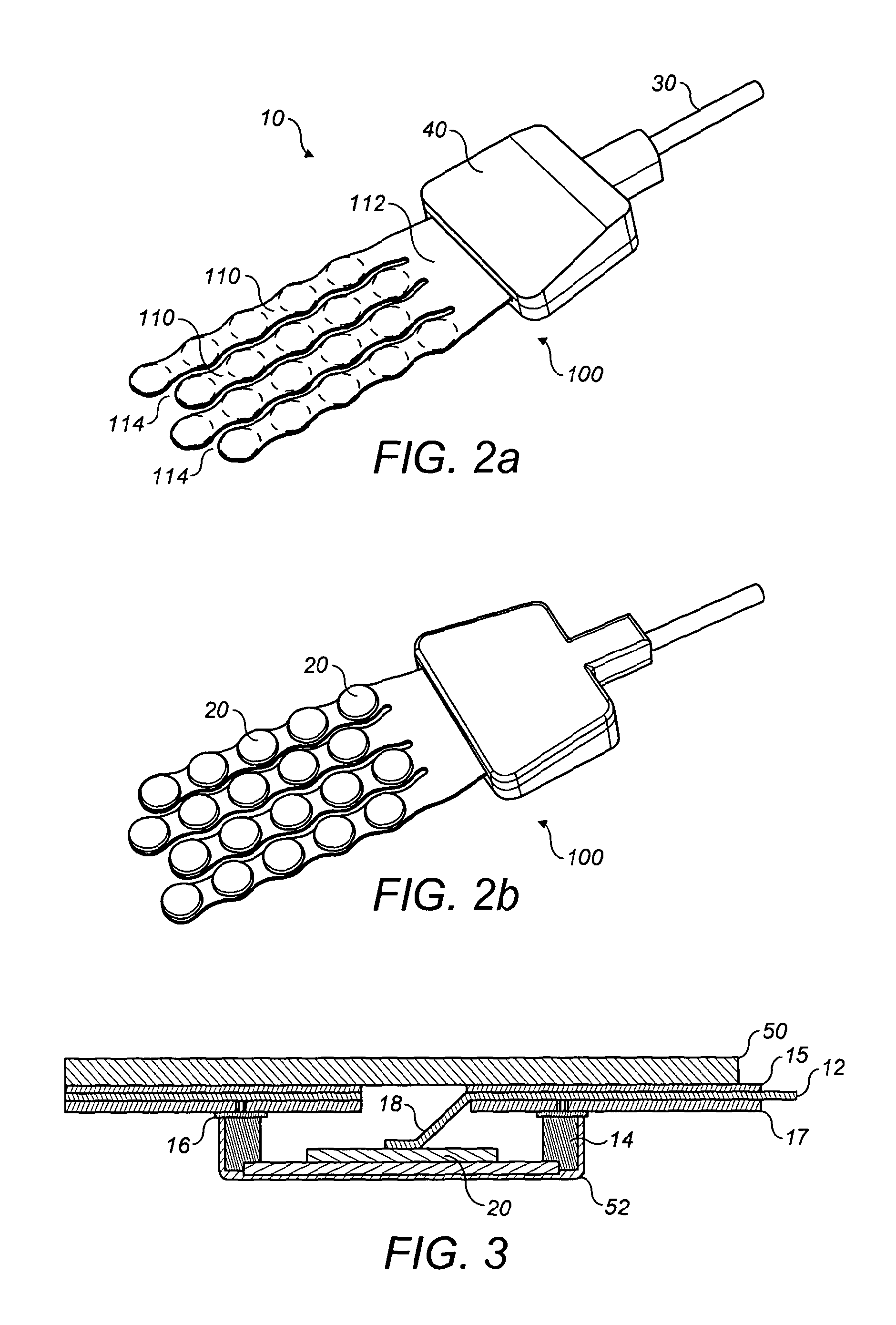Flexi-PCB Mounting of Ultrasonic Transducers for Enhanced Dermal and Transdermal Applications
a technology of ultrasonic transducers and flexi-pcbs, which is applied in the direction of mechanical vibration separation, instruments, therapy, etc., can solve the problems of reducing therapeutic benefits, overheating/thermal damage, and lysis of cells
- Summary
- Abstract
- Description
- Claims
- Application Information
AI Technical Summary
Benefits of technology
Problems solved by technology
Method used
Image
Examples
Embodiment Construction
[0045]The invention is for a flat, flexible PCB 10 (flexi-PCB) which allows the mounting and electrical drive of one or more dual-frequency ultrasonic transducers 20. The combination of the transducers 20 and the flexi-PCB 10 then forms a flexible patch 100 which is capable of applying ultrasonic energy over an area in a flexible format which can form to allow effective contact on a 3D surface.
[0046]FIGS. 1a and 1b show a typical structure for a dual-frequency transducer 20, which comprises a piezo-electric, circular plate 22 bonded concentrically to a circular plastic or metal substrate 24. This construction allows the generation of acoustic energy at two different frequencies. The transducer construction used to generate the double frequency is to have a single device (the ‘transducer’ 20) vibrate in both bending mode (for the low frequency, 50 kHz) and thickness mode (for the high frequency, 3 MHz). The transducer 20 is a “unimorph”, in other words a piezo-electric plate 12 bonde...
PUM
 Login to View More
Login to View More Abstract
Description
Claims
Application Information
 Login to View More
Login to View More - R&D
- Intellectual Property
- Life Sciences
- Materials
- Tech Scout
- Unparalleled Data Quality
- Higher Quality Content
- 60% Fewer Hallucinations
Browse by: Latest US Patents, China's latest patents, Technical Efficacy Thesaurus, Application Domain, Technology Topic, Popular Technical Reports.
© 2025 PatSnap. All rights reserved.Legal|Privacy policy|Modern Slavery Act Transparency Statement|Sitemap|About US| Contact US: help@patsnap.com



